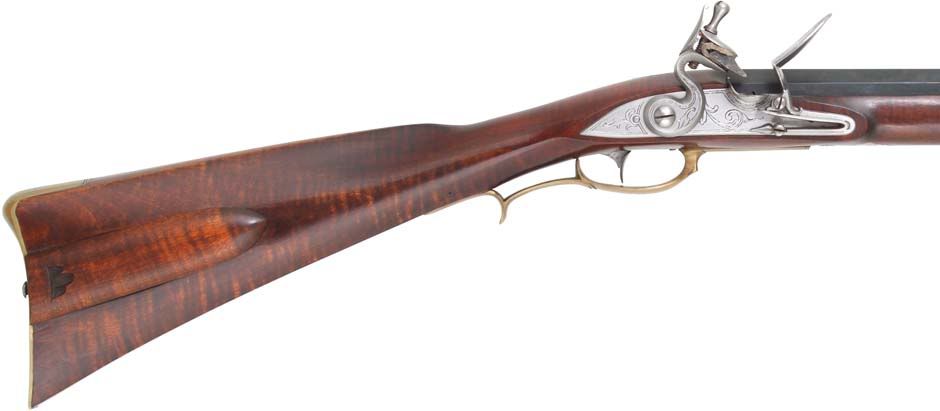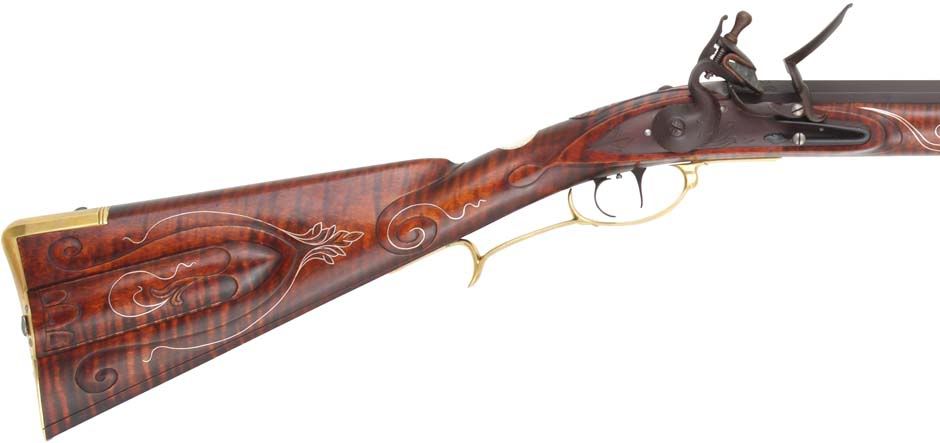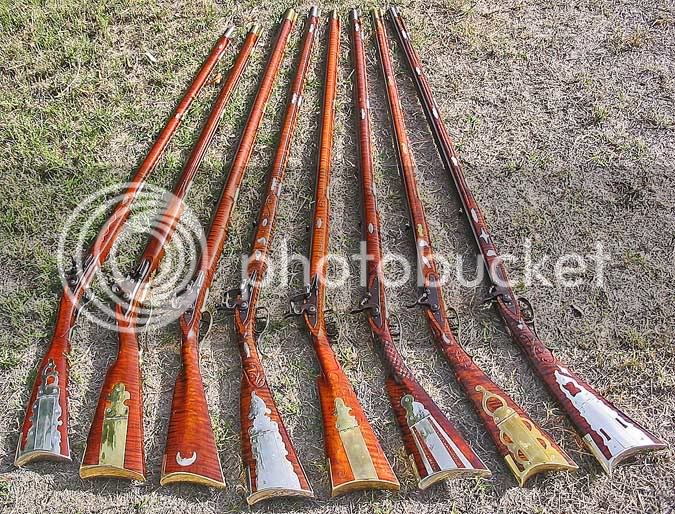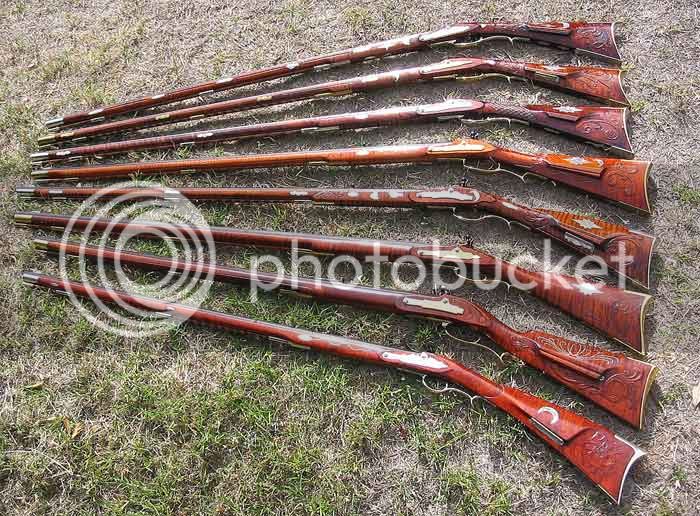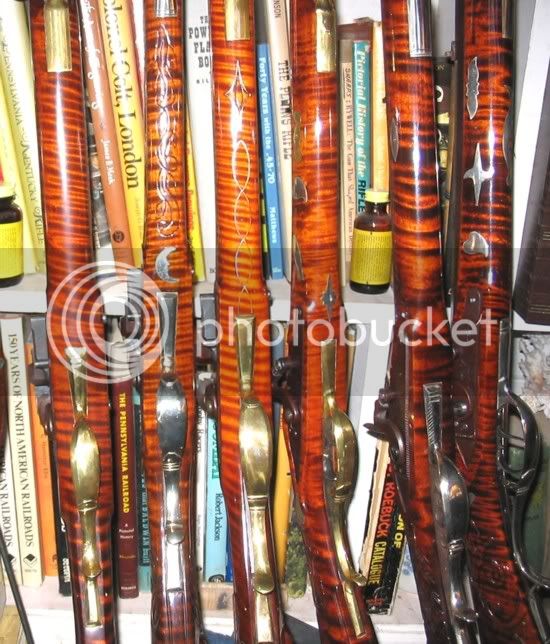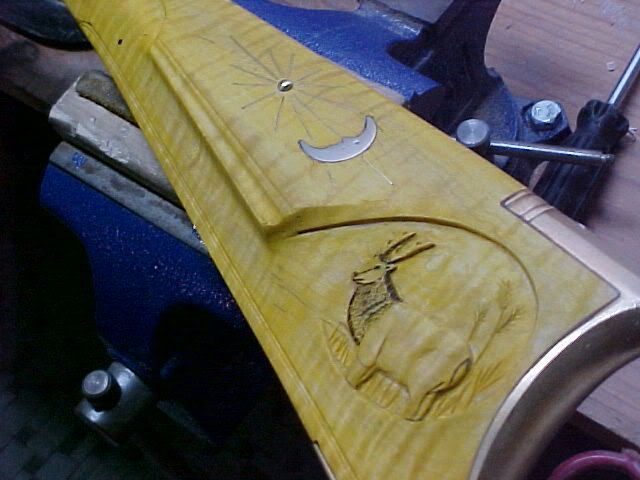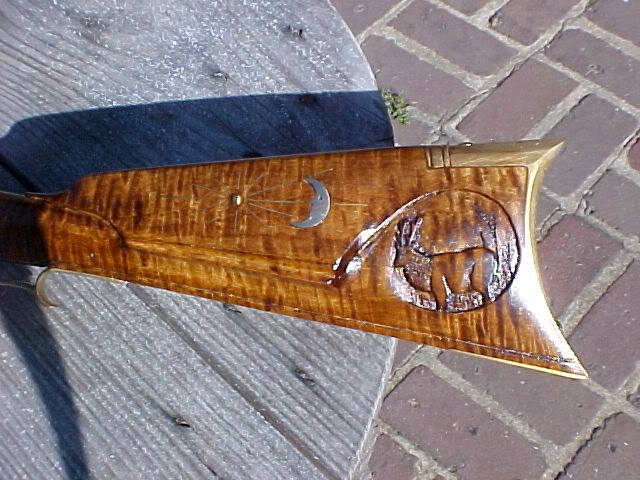karwelis:
To save you the trouble of looking thru all of my old posts, here are a few pictures of some of the guns I built.
These were all stained with alcohol based stains.
The darker ones have multiple coats of Birchwood Casey "Walnut" stain combined with either Maple or "Colonial Brown".
Colonial Brown isn't available any more but a close match would be Solar-Lux Mahogany.
All of these were first treated with a solution of lye water before the stains were applied.
IMO, this treatment cleans any oils your hands may have left on the wood. It also brings out the tannin (the woods natural brown color).
It acts on the exposed "end grain" that forms the stripes more than on the wood between them so it makes them stand out better.
Lye water can be made using dry lye (available in many hardware plumbing areas) and water.
Add the lye to the water. DO NOT add water to dry lye. I use about a tablespoon in a half cup of water.
Do not use natural hair brushes to apply this stuff. It will dissolve them. If you get it on you it will dissolve you too so be damn careful with it.
One heavy wet coat is all that is needed.
After it drys, neutralize it with vinegar.
When that's dry, apply the stains.
Remember, the color of the wood and its darkness when it is wet is just the way it will look after the oil finish coats are applied.
When the stains are dry they will look much lighter than they will after the oil gets on them.
As for the acid method (Aqua Fortis) I only tried it once and didn't have good luck with it.
That is probably my fault but I had difficulty in applying the heat to make it turn dark without burning some of the areas (which turns the acid coated wood black).
Most of the really good alcohol stains can only be bought at Woodworkers stores or from places like Track of the Wolf, MBS, or similar places that deal in muzzleloading supplies.
NEVER use one of the OIL BASED stains. They will never give you the colors and appearance you want.
By now, you have noticed that there is a lot of variation in the colors of my guns.
This is because I wanted different darknesses so the lighter colored guns were stained mainly with Maple stain. The darker ones were stained mainly with Walnut stain.
In any case, the advice of the others that you use a spare piece of wood to try the stains on is good. Just remember, each piece of wood is different and each one will be different even though the type of stain and the number of coats you apply are exactly the same.
For this reason, I suggest you use the barrel channel or the piece of wood you cut off when installing the butt plate as your test wood.
